已传文件:photo/1631586161.png
North Konami can provide 2D MXenes-based nanomaterials (customizable)
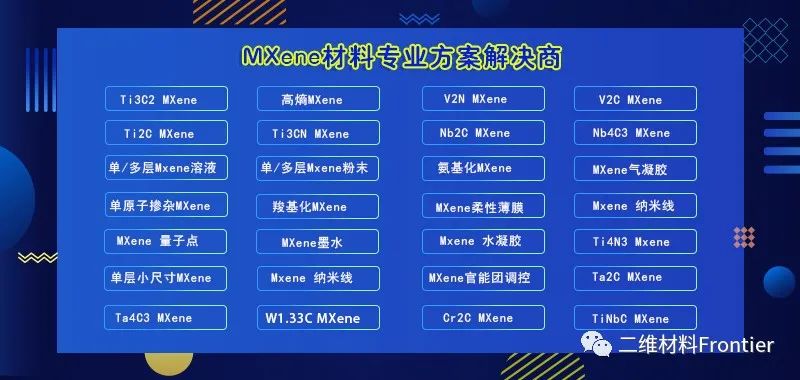
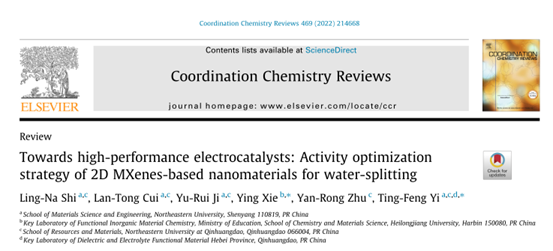
Summary of the review
Water splitting is considered as a sustainable and environmentally friendly technology for green hydrogen production. However, hydrogen production is restricted due to the sluggish reaction kinetics and high overpotential of the two half-electrode reactions (HER, OER). It is crucial to find efficient electrocatalysts to enhance the water splitting performance. Among the numerous nanomaterials, MXenes-based nanomaterials can be used as excellent substrate materials for designing new materials due to their large specific surface area (SSA), fast electron transport speed, and good mechanical stability. In this paper, the recent research progress in the synthesis route, physical properties and performance improvement strategies of MXenes is reviewed, and the mechanism of electrocatalytic water splitting of MXenes is comprehensively reviewed from both experimental and theoretical aspects. Finally, the paper looks forward to the future challenges, opportunities and further research directions of MXenes and related materials in water separation applications. This review has important implications for the design and optimization of efficient MXenes-based electrocatalysts.
Recently, the team of Professor Yi Tingfeng from Northeastern University reviewed the recent research progress on the synthesis methods, physical properties and performance improvement strategies of MXenes, and made a comprehensive review of the electrocatalytic water splitting mechanism of MXenes from both experimental and theoretical aspects. Finally, the challenges, opportunities and further research directions of MXenes-based nanomaterials in future water splitting applications are prospected. This review has important implications for the design and optimization of efficient MXenes-based nanoelectrocatalysts.
The review was published online in the top international journal Coordination Chemistry Reviews (Impact Factor) with the title: Towards high-performance electrocatalysts: Activity optimization strategy of 2D MXenes-based nanomaterials for water-splitting. Sina is the first author of this article.
Graphical guide
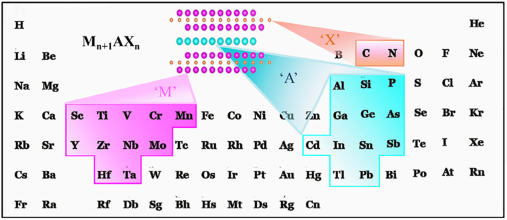
Figure 1. Elemental composition of the MAX(Mn+1AXn) phase
picture
MXenes can be obtained from the parent Mn+1AXn phase by selective removal of group A elements, where Mrepresents early transition metals (Ti, V, Mo, Ta, etc.) and A is mainly IIIA and Group IVA elements, andX is nitrogen and/or carbon
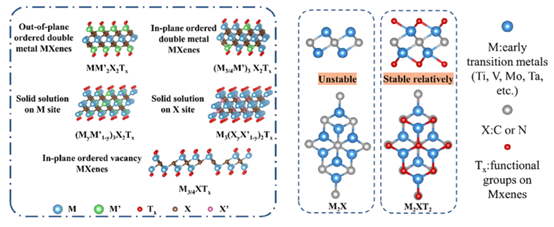
Figure 2. Schematic diagram of the classification and crystal structure of MXenes
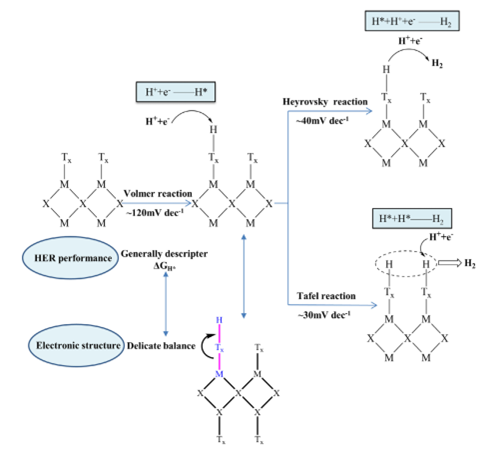
Figure 3. Reaction mechanism of HER in acidic media
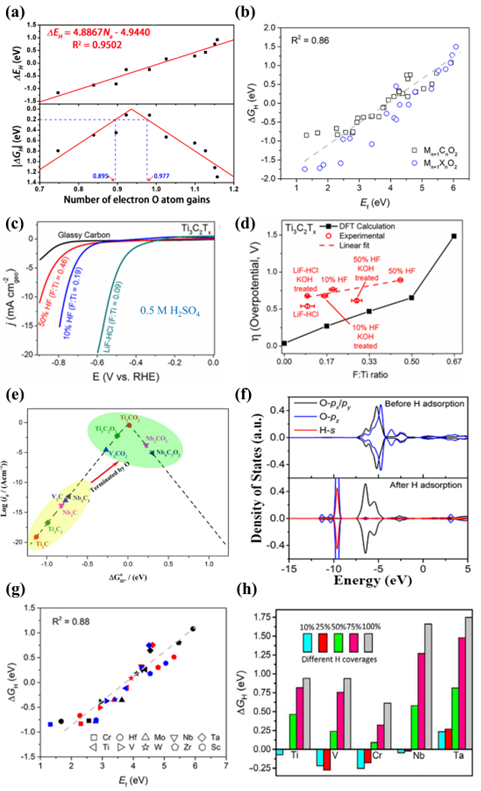
Figure 4. (a) |ΔGH| and ΔEH as a function of Ne, (b) online linear relationship between ΔGH and Ef for Mn+1XnO2, (c) LSV of Ti3C2Tx terminated with different functional groups and (d) F:Ti and overpotential, (e) volcano plot curve, (f) PDOS plot before and after H adsorption in Hf2CO2, and (g) linear relationship between Ef and |ΔGH| of Mn+1CnO2 for different metal species, (h) Hydrogen evolution free energy diagram of five M2NO2 MXenes.
ΔGH is a suitable descriptor to describe the performance of HER. A value of ΔGH that is too positive or too negative indicates that the adsorption of H* is too weak or too strong, which is not an ideal HER catalyst. Catalysts with ΔGH close to 0 eV are ideal for hydrogen evolution (Fig. 4e).
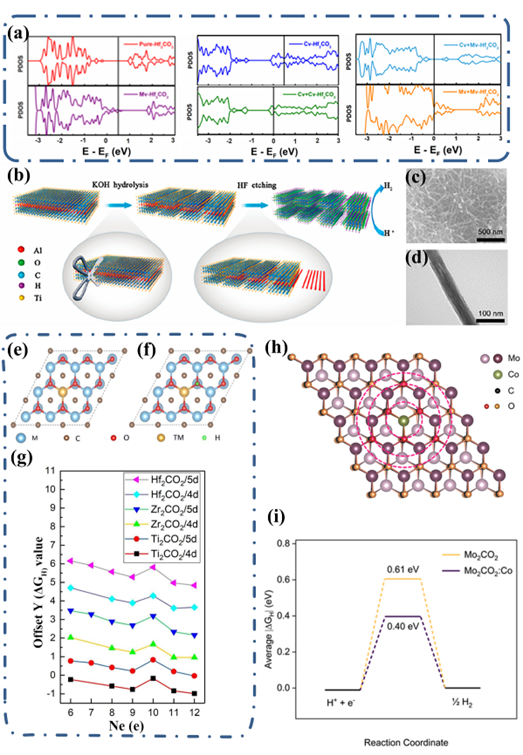
Figure 5. (a) Projected density of states (PDOS) images of O atoms on the surface of Hf2CO2 with defects, (b) schematic diagram of the synthesis process of Ti3C2 nanofibers, (c) SEM and (d) TEM images of the as-prepared Ti3C2 nanofibers, ( e) Schematic crystal structures of M2CO2-TM and (f) M2CO2-TM-H, (g) hydrogen adsorption energy diagram of M2CO2-TM, (h) calculated model structures of Mo2CO2:Co, (i) Mo2CO2 and Mo2CO2:Co HER free energy diagram.

Figure 6. Theoretical and experimental studies on the HER performance of MXenes by anion doping.
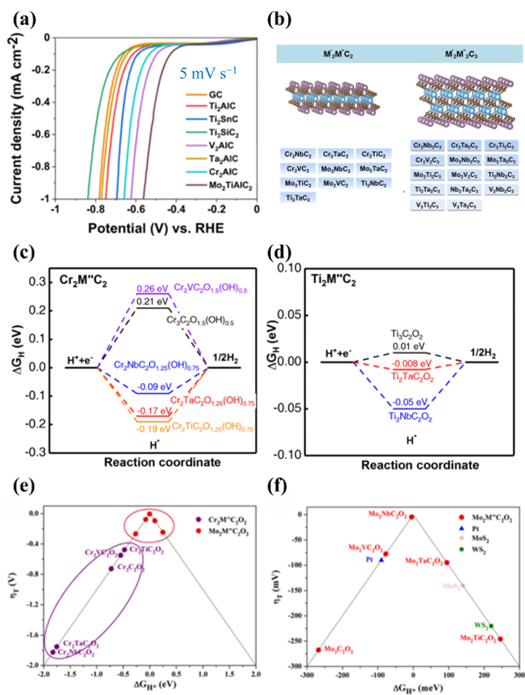
Figure 7. Modification of HER performance of multilayer MXenes.
The “sandwich” structure of MXenes can enhance the catalytic activity of HER by incorporating another TM element into the inner or outer metal layer (Fig. 7).
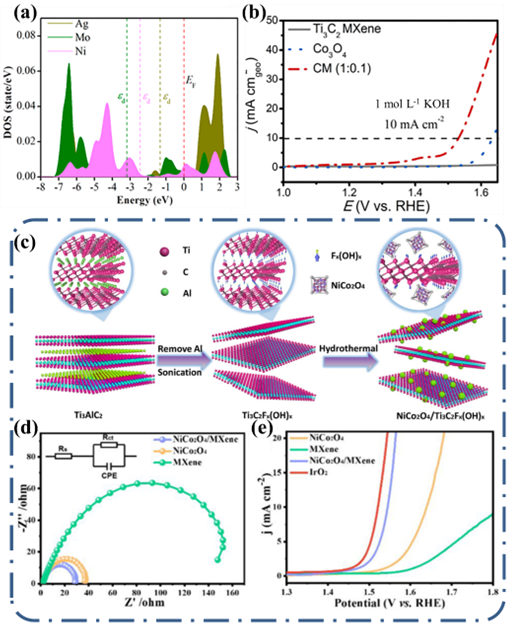
Figure 8. OER performance of single-atom and nanoparticle-modified MXenes-based materials.
picture
There are 4 electronic reactions in OER:
The adsorption energies of the intermediates OH, O, and OOH were calculated as follows:
If the catalyst has moderate adsorption energy for the three oxygen-containing intermediates, it indicates that the catalyst has good catalytic performance for OER. In theory, the d-band-center is usually used to describe the adsorption capacity of catalysts for oxygen-containing intermediates. Generally speaking, the lower the d-band center, the weaker the adsorption of oxygen-containing intermediates, and the higher the d-band center, the stronger the adsorption of oxygen-containing intermediates (Fig. 8a).
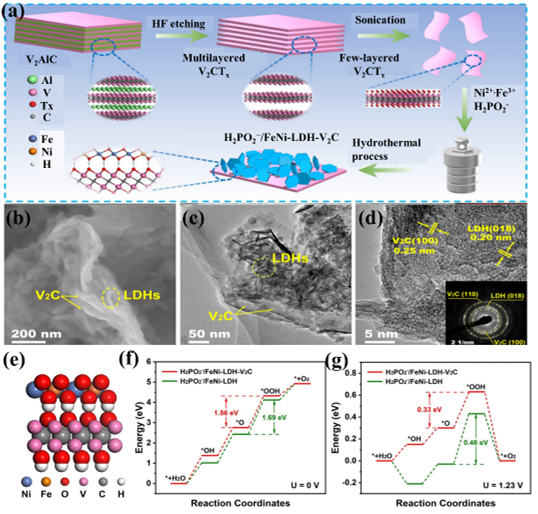
Figure 9. OER performance of 2D/MXenes composites.
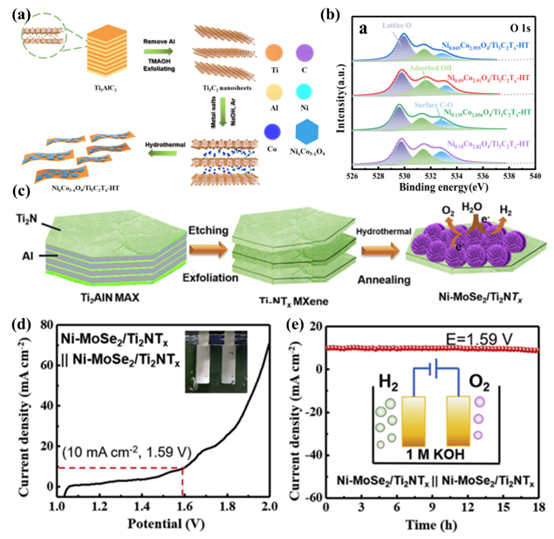
Figure 10. Water splitting performance of 0D/MXenes composites.
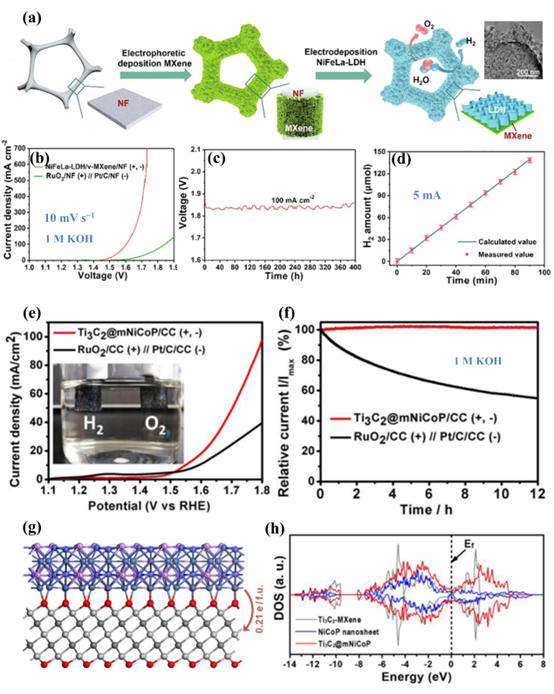
Figure 11. Water splitting performance of 2D/MXenes composites.
Summary Outlook
MXenes have unique advantages such as high electrical conductivity, tunable surface chemistry, excellent mechanical properties, good chemical stability, and highly exposed active centers, and are widely used in electrocatalytic water splitting. However, some challenges remain to be clarified and addressed for further applications in electrocatalytic water separation.
1. Ti3C2Tx undergoes irreversible oxidation at around 450 mV to form nano-TiO2 clusters. This strongly changes its surface properties in alkaline solution and the electrode potential required for OER. Therefore, stabilizing MXenes in this potential range is a serious challenge to be solved in the future.
2. The main synthetic route of MXene is hydrofluoric acid etching, which tends to have a negative impact on the environment. Meanwhile, the high toxicity of hydrofluoric acid also hinders the large-scale production of MXenes.
3. Although there are many MXenes that can exist stably in theory, the experimental research mainly focuses on titanium-based MXenes. The structure and properties of titanium-based Mxenes are well understood, while the preparation routes and electrocatalytic activities of other Mxenes are not well studied.
4. The surface end groups of Mxene have a great influence on the electrocatalytic activity, and the regulation of surface end groups needs further experimental and theoretical research.
5. The low yield of MXenes is also a key issue for large-scale production.
picture
In order to solve the above problems, the following research directions and prospects are proposed:
1. The structure and properties of MXenes will be affected by the synthetic route, Mxenes are easily oxidized, especially under extreme conditions, the structure and conductivity of Mxenes will be destroyed due to the high exposure of surface metal atoms. Therefore, future research directions need to focus on developing efficient and environmentally friendly synthetic methods to prepare MXenes. At the same time, some effective measures should also be developed to prevent MXenes from being oxidized under extreme conditions. The appropriate synthetic route can be selected according to the properties and requirements of the material to achieve the best performance.
2. The surface termini of MXene can affect its electrocatalytic activity. For example, in some cases, MXenes functionalized by -F end groups have been shown to be unsuitable for HER, while MXenes functionalized by -OH or -O groups have been shown to have promising applications. Therefore, the surface end regulation of MXenes is another important research direction, and fundamental scientific issues between the synthesis and structure of MXenes still remain to be solved, such as the regulation of metal species with the surface, electronic structure, and stability of functional groups.
3. The finite linear scaling relationship between the adsorption/desorption of the catalyst on a single active site is a limitation on the catalytic process. From the traditional viewpoint of heterogeneous electrocatalysts, each active center is regarded as an independent "island". Electrocatalysts with adjacency effects between adjacent active centers can overcome this limitation. The synergistic effect of adjacent dual active centers in MXenes-based electrocatalysts may affect the reaction barrier, which is beneficial to the activation of chemical bonds during the electrocatalytic reaction. Adjacent active centers may alter the reaction route of the intermediate, leading to fast kinetics of the reaction.
4. The recombination between MXenes and other nanostructures is another promising direction, as MXenes as conductive substrates provide fast charge transfer and achieve enhanced electrocatalytic activity through the modulation of electronic structure. The combination of MXenes with other nanostructures, such as 0D nanoparticles, 1D nanowires, 2D nanosheets, etc., can achieve strong interactions and large interfacial areas, thereby greatly amplifying the synergistic effect in electrocatalysis. The construction of hybrid heterostructures can effectively prevent the agglomeration and repacking of MXenes, thus providing abundant active centers. In addition, heteroatom doping and defect engineering are also effective ways to enhance the electrocatalytic performance, as these measures positively affect both the surface states of MXenes and the electronic properties of the surface.
5. For HER, MXenes can be used both as active materials and as carriers for loading active materials. On the one hand, the fast electron transfer from the electrode to the catalyst surface can be achieved due to the good electrical conductivity of MXenes. On the other hand, the moderate surface proton affinity of MXenes enables a well-balanced desorption/adsorption of protons. The combination of these advantages would make MXenes superior to other materials for HER. For OER, MXenes are often used as substrates to unload active species due to their poor adsorption-desorption activity towards oxygen-containing intermediates. Although the activity of MXenes is relatively low, combining them with active species can not only increase the electronic conductivity, but also enhance the catalytic performance by exploiting the synergy between the different components.
6. Electrochemical stability at high current densities is an important parameter for any electrocatalyst in practical applications. In fact, even commercially available noble metal materials (Pt/C and RuO2) used on a large scale exhibit poor stability at high current densities, which limits their large-scale applications. Unlike HER, MXenes are not excellent OER electrocatalysts by themselves, thus limiting their application in water splitting. However, as very stable metal supports supporting nanostructured materials, Mxene-based electrocatalysts can exhibit great catalytic performance due to synergistic effects even under high current density and different pH conditions.
7. So far, theoretical research on MXenes has been mainly carried out by density functional (DFT) calculations (semi-local), but the functionals in DFT are not accurate in predicting the band gap. It is well known that the preparation of MXenes without surface capping is still not possible. Therefore, the small band gap of functionalized MXenes cannot be well predicted for some specific applications. We encourage the use of stable many-body perturbation processing, also known as the GW approximation. In addition, density functional theory attempts to study electrochemical reactions from a thermodynamic perspective and cannot adequately describe the kinetic reactions on MXenes catalysts. Therefore, the use of dynamic models such as the dynamic Monte Carlo method is an important direction in the future. An important frontier is the development of computational methods that can rapidly elucidate reaction mechanisms under a wide range of operating conditions (e.g., pH, solvation effects of electrolytes, potential). Currently, most DFT calculations do not adequately account for the role of these conditions. Most importantly, future efforts in density functional theory calculations should be more closely integrated with experimental measurements, especially under in situ reaction conditions, to further understand the role of MXenes materials as electrocatalysts. Furthermore, since the structure, composition, and stoichiometric ratio of MXenes are tunable, these complexities will make machine learning a very efficient method to screen, predict, and design MXene materials with excellent catalytic properties. In this regard, several studies have been carried out to predict the properties and stability of MXenes and their bulk counterparts, MAX. However, the application of machine learning in this field is still in its infancy, and further efforts are still very much needed in the future.
In short, the research directions of MXenes-based electrocatalysts are summarized as: (1) developing efficient and environmentally friendly synthetic methods to minimize the oxidation and mechanical damage of MXenes under extreme conditions; (2) exploring more types of MXenes , especially MXenes with high conductivity and stability under extreme conditions; (3) Tuning the controllable functional groups on the surface of MXenes, designing MXene heterojunction nanostructures, and constructing MXenes with optimal catalytic performance for vacancy defect engineering; (4) To explore the synergy and understanding of the dual-active-site HER and OER mechanisms in MXenes-based electrocatalysts; (5) to construct efficient MXenes-based electrocatalysts with high stability at high current densities; (6) to combine density functional theory calculations and advanced Characterization techniques to study the electrocatalytic mechanism.
Literature link
https://doi.org/10.1016/j.ccr.2022.214668
For the original text, please click the bottom left corner of the last tweet to read the original text
Special thanks to the author of this article for their great support!
















